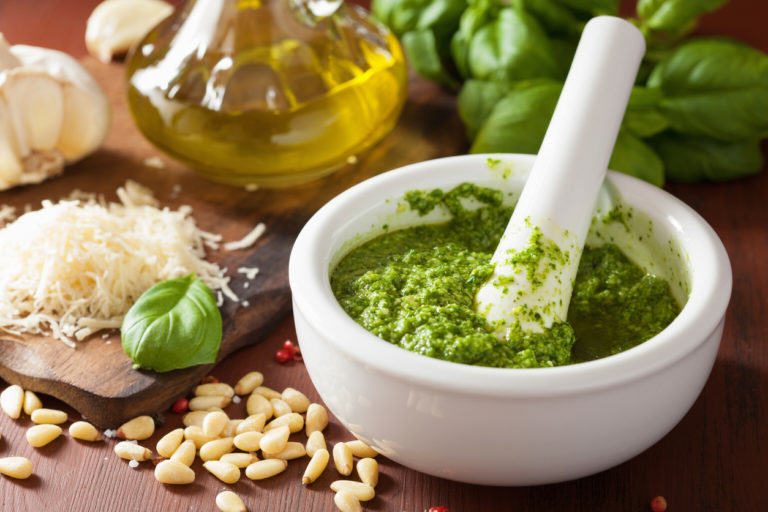What is the Scoville Spiciness Scale?
List of contents
- How are the units of the Scoville Scale (SHU) measured?
- HPLC to measure units of capsaicin
- Is the Scoville scale only for peppers?
- How precise is the Scoville scale?
- What is the hottest pepper on the Scoville scale?
- How many Scoville units can a person take?
- Who has the world record for eating hot peppers?
- You'll never go to bed without tasting one more pepper
The Scoville scale is a way of measuring the degree of hotness of the fruits from plants of the genus Capsicum, better known as peppers or chillies. The scale was devised in 1912 by the American chemist Wilbur Scoville while working for Parke Pharmaceuticals trying to find a suitable pepper to use in a heat-producing ointment. It was so named to calculate the amount of capsaicin present in different peppers, an interesting substance that turns out to be the active component that causes the different degrees of heat.
Capsaicin is responsible for making the tongue burn, the body sweat and even the ears ache after eating a hot pepper. In fact, peppers store capsaicin to deter predators from eating them.
How are the units of the Scoville Scale (SHU) measured?
In the past, the number of Scoville units was established through an organoleptic test carried out by a group of around five experts who diluted the extract of each pepper (namely an alcoholic extract of capsaicin oil from a dried pepper) in sweetened water. In this way, they gradually modified their ratio until they detected the amount of dilution necessary to avoid detecting the spicy sensation of each extract.
Thus, if it took 5,000 teaspoons of sweetened water to bring one teaspoon of jalapeño pepper to a "no heat" level for the tasters, then the jalapeño was assigned a SHU (Scoville Heat Units) of 5,000. Likewise, if a Habanero Chocolate pepper is assigned 450,000 Scoville units, then it takes 450,000 teaspoons of sugar water to neutralise the heat. That's a lot of teaspoons!
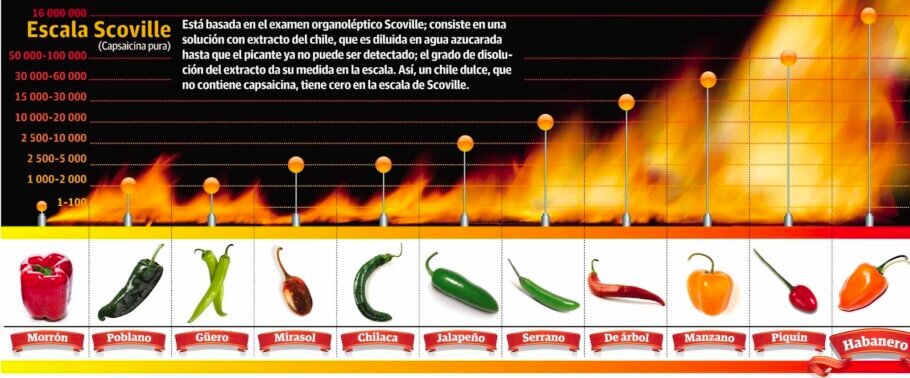
Since the 1980s, instead of measuring the subjective sensation of spiciness with a panel of human tasters, quantitative laboratory analyses such as High-performance Liquid Chromatography (HPLC) have been used to establish the amount of capsaicin present in different peppers, while still using the Scoville scale due to its widespread use as well as out of respect for its inventor.
HPLC to measure units of capsaicin
HPLC is the scientific process used to separate the components of a mixture for analysis and in this case tells us how many capsaicinoids (capsaicin and related substances) are present in parts per million. In short, Scoville scale ratings are now assigned based on how much capsaicin a pepper (or hot sauce) contains. But it's basically a nostalgic nod to Wilbur Scoville, the pioneer of chilli heat measurement, as the scientists convert their chromatograph results back into Scoville units. The simplest way to think of this is that one part of the chemical capsaicin per million (ppm) equals about fifteen Scoville units.
But even the HPLC test harbours doubts about its conversion into Scoville units. Some scientists believe that the conversion tends to place the hotness of the peppers too low on the scale in comparison to the score that a human taster would give. But even so, for something that varies so widely, the Scoville scale is as accurate as it needs to be: it helps hot food fanatics determine the heat of everything from peppers to hot sauces and even the spiciest gourmet foods.
Be that as it may, the Scoville scale starts at 0 (food with no capsaicin) and goes up to 16 million (pure capsaicin), considering that a product as potent as police pepper spray has a SHU of between 2.5 and 5 million. For reference, a few years ago a US company marketed a hot sauce called '16 Million Reserve' that was just that: pure capsaicin crystals.
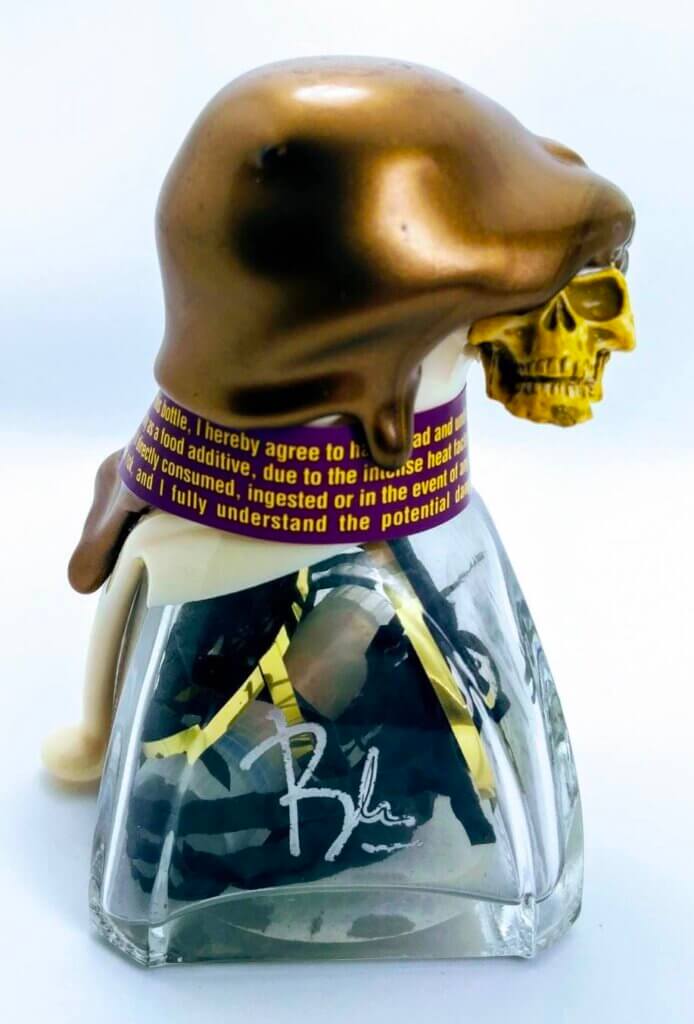
Is the Scoville scale only for peppers?
The Scoville scale can be used not only to measure peppers but also for anything made with peppers, such as hot sauce. What is really being measured is the capsaicin concentration, the active ingredient that produces the hot, spicy sensation on the tongue. So if you turn over that Tabasco sauce bottle you probably have in your kitchen and check the label, you'll see its spiciness as expressed in Scoville units.
But the Scoville scale can also be used to measure other plants that produce pungent chemicals. For example, resin spurge (Euphorbia resinifera), a cactus-like species native to Morocco, which produces a chemical called resiniferatoxin that is a thousand times more pungent on the Scoville scale than pure capsaicin, a substance that reaches 15 billion SHU: if the Devil exists, he might use it to gargle with! In fact, the molecule is so powerful that it is now being investigated as a potential analgesic for some neuropathic pain and is being used to unravel the mechanisms of pain.
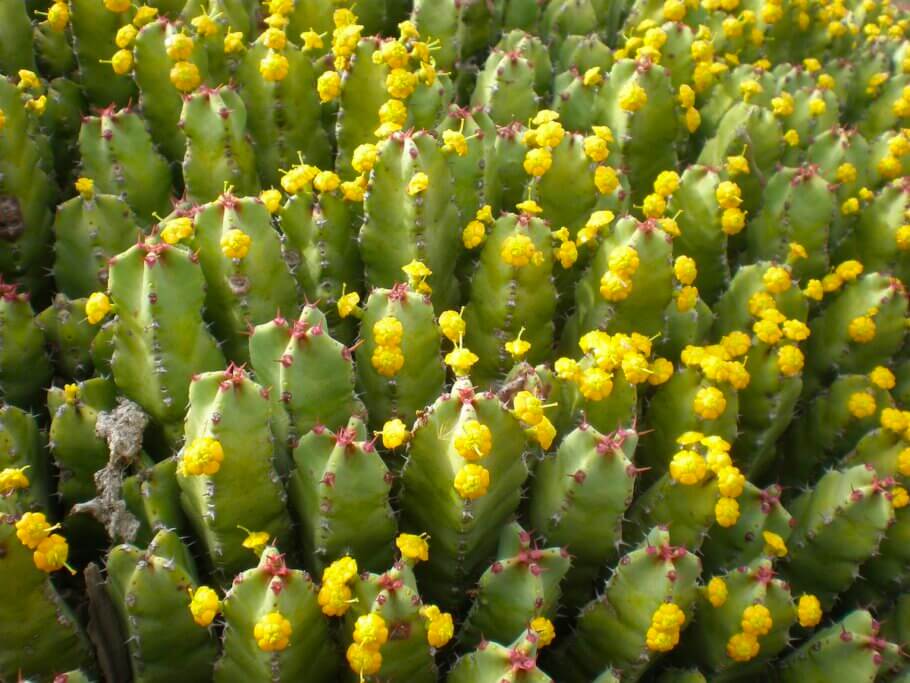
How precise is the Scoville scale?
The Scoville scale is reliable in the sense that it uses an accurate scientific process (High-performance Liquid Chromatography) to measure the amount of capsaicin present in a particular pepper. However, Scoville ratings also change depending on the pepper's growing conditions, such as moisture levels and soil type; and also its maturity, seed lineage and other factors, so a jalapeño under optimal growing conditions will have more capsaicin than a jalapeño deprived of nutrients, sunlight, etc.
In fact, you can often see that a hot pepper has a range on the Scoville scale (e.g. Boule de Feu peppers range from 300,000 to 400,000 SCU). This variance explains the possible differences in capsaicin between individual Boule de Feu peppers according to their phenotype. However, we can accurately say that the Scoville scale rating of this variety makes it a pepper that will deliver an exceptional (and for some people, unbearable) amount of heat.
What is the hottest pepper on the Scoville scale?
There are about 60 species within the genus Capsicum, of which only four are cultivated. However, there are thousands of varieties resulting from hybridisation and selection, some of them so hot that they can even be dangerous to health if not taken with caution. Not all of them have the same "burning power"; in fact, there are some, such as sweet peppers and paprika, which do not contain capsaicin, are not hot and have a value of zero SHU. The spicy Padrón peppers that many of us are familiar with have between 2,000 and 5,000 Scoville units; and Tabasco sauce, depending on the brand, has between 100 and 50,000 Scoville units.
But since 2013, the Carolina Reaper chilli has held the title of the hottest pepper on the Scoville scale. Weighing in at around 2 million SHU, the "reaper" will claim the souls of your taste buds and takes them straight to hell. Handling it with gloves is recommended, because... it's almost like police pepper spray!
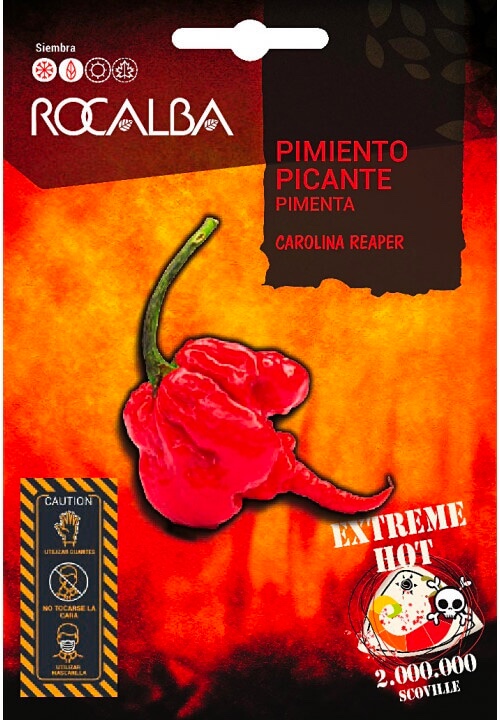
By comparison, the Habanero Red chilli, one of the most common hot peppers, has a SHU of up to 300,000, while our old friend the cayenne pepper has between 30,000 and 50,000 Scoville units, which is a walk in the park compared to the party that will ensue in your mouth if you bite into a Bhut Jolokia, which comes in at just over 800,000 SCU, strong enough for the Indian Army to use as an ingredient in a hand grenade used to immobilise the enemy.
How many Scoville units can a person take?
In an extreme hot pepper-eating contest, such as those that are part of The League of Fire circuit, which regulates such events worldwide, participating victims may be required to eat three to five raw Reaper chillies or 7 to 11 million Scoville units. Imagine falling into a volcano after a long sauna session and you'll have a rough idea of how hot it will get in your mouth. And the higher up the Scoville scale you go, the more significant the side effects will be.
The mechanics of these contests is that with each round, the chillies get stronger and stronger, and whoever makes it to the final has to eat the hottest peppers as fast as possible. There is also another type of competition, such as the one in Nagaland, India, where the emphasis is on speed rather than stamina. Competitors have 20 seconds to eat as many Naga chillies (up to 1,500,000 on the Scoville Scale) as possible.
In these contests, some participants have reported hallucinations after eating spicy foods in the 6 million SHU range, while higher concentrations can cause vomiting and retching, and can even cause someone to faint.
However, scientists suggest that it would take around 13 grams of pure capsaicin to kill a 70kg person: fortunately, no capsicum comes close to this level of lethal heat, so you can feel safe eating hot peppers without worrying about taking out a life insurance policy.
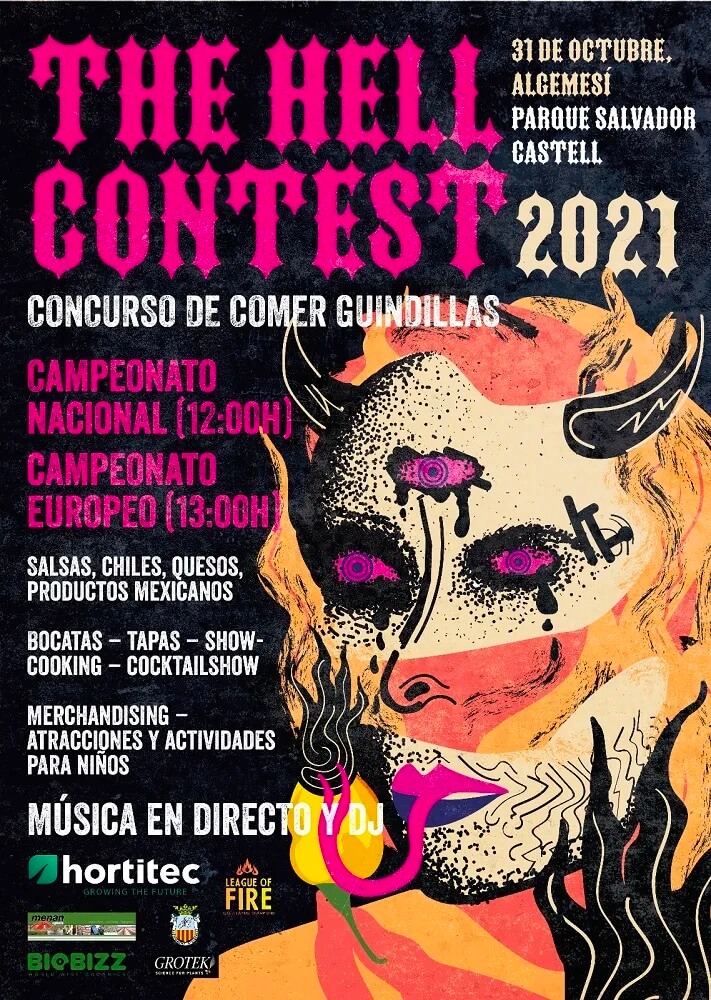
For ordinary people, the Scoville units we can handle will depend on one's individual tolerance. Some of us can handle the heat, while others prefer the capsaicin-free world of zero SHU bell peppers. And there are those who only go as far as the Russian roulette of Padrón peppers, in which some are hot and some are not. If you're just dipping your toes into Scoville's world, always start with mildly-hot peppers to determine your benchmark, then work your way up in Scoville Heat Units as far as your little heart will take you.
Who has the world record for eating hot peppers?
His name is Gregory Foster, a Californian who has made it into this year's Guinness Book of World Records for eating three of the world's hottest peppers (Carolina Reaper) in just nine seconds, the shortest time ever recorded. In addition to the speed of eating, this record is all about spice tolerance, which is definitely something to consider if you're eating the world's hottest peppers.
In fact, Foster didn't just consume three Carolina Reapers to take the record, he had to eat six because his first attempt ended in failure, as he didn't finish swallowing all the peppers before the time was up. On his second attempt, however, and with his mouth already warmed up, Foster ate all three Carolina Reapers in just 8.72 seconds, beating the previous record set by Canadian Mike Jack last year, also with three Carolina Reapers, but on this occasion taking slightly longer to down them: 9.72 seconds.
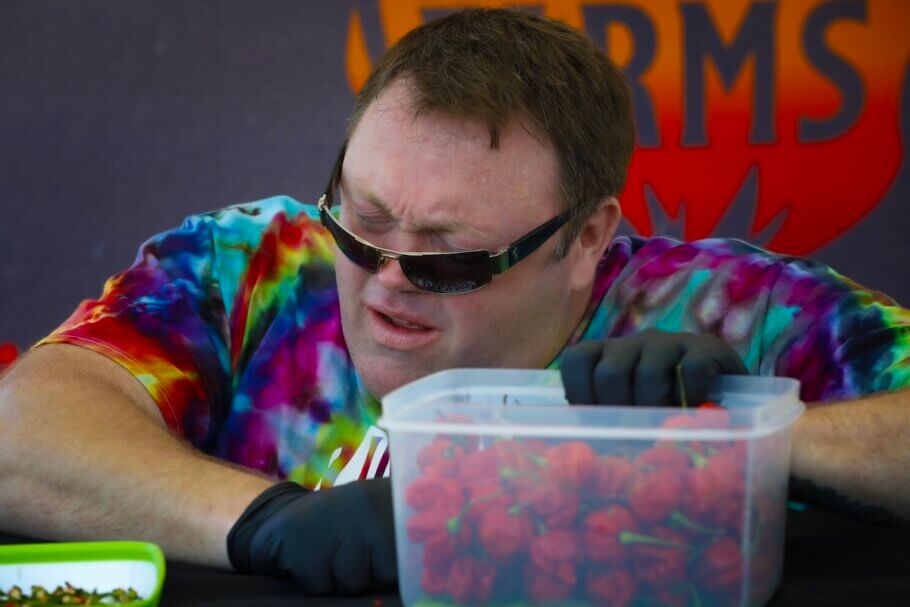
You'll never go to bed without tasting one more pepper
As you can see, once you know how the Scoville scale works and what it measures, you will gain a deeper appreciation of the wonderful world of hot peppers and where your taste buds fit into it. The Scoville scale will also help you choose the perfect hot pepper seed pack for you to grow, or for that hot sauce fanatic in your life (and we all know one). Plus, the Scoville scale offers a treasure trove of tidbits of information to fill awkward silences at meals with the in-laws. We bet your brother-in-law doesn't even know that a Trinidad Scorpion pepper has 1.2 million UCS, but we're sure he'll be fascinated by that information.
------
Bonus Track: And if whoever you're talking to doesn't even flinch, you can double the bet by showing him or her this video demonstrating the squaring of the paprika circle: a cover of a song by the Californian band Red Hot Chili Peppers performed on... hot red peppers!





























































